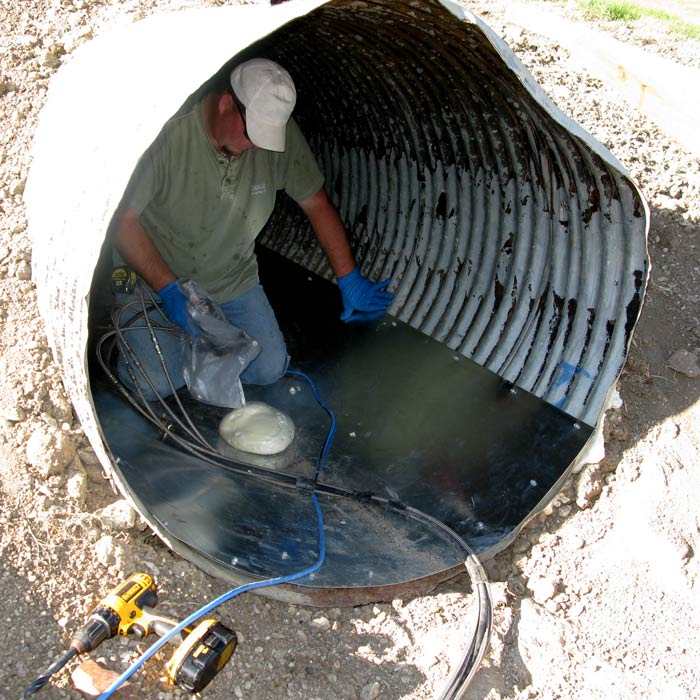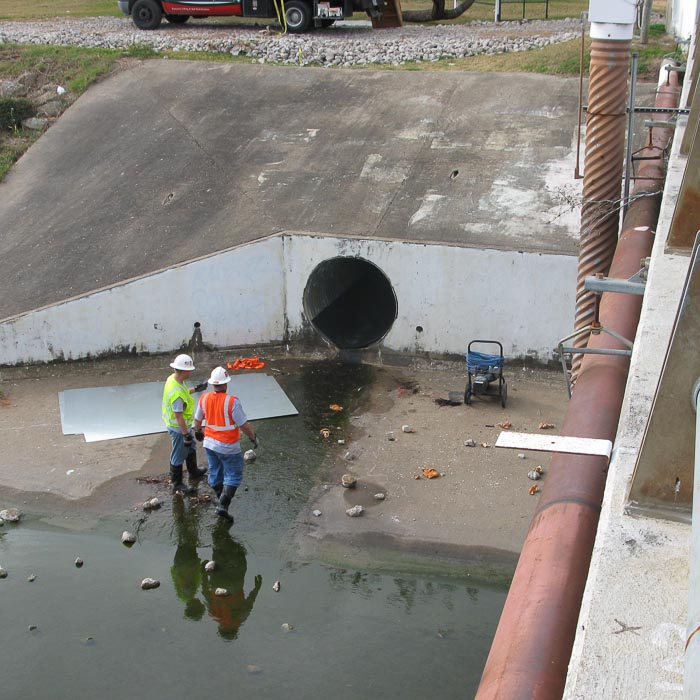Our CMP Repair Process
When we’re called to repair corrugated metal pipes, we follow a specific process that has been time-tested and proven to be highly effective.

- We provide in-person inspections to identify the pipe’s faults and determine what, if any, repairs are needed.
- After the initial inspection, we’ll provide you with a written estimate.
- To begin the repairs, we clean the area of the pipe that is to be repaired, removing dirt, rocks, and debris as needed. We don’t need to pump for a dry area, but we do try to work at times when the water level inside the pipe is low.
- Starting at the pipe’s elbow, we lay a custom coated sheet of 12-gauge steel over the damaged area of the pipe, overlapping each sheet for maximum effectiveness, and secure the patch using a pneumatic nail gun.
- We drill relief holes to ensure that excess water can be ejected when the polyurethane is injected into the voids behind the pipe.
- Then, we inject polyurethane into the voids between the pipe’s outer surface and the dirt surrounding it. The polyurethane expands to fill the voids, providing additional support and waterproofing to the pipe.
- We clean up our work areas and cut away any excess hardened polyurethane foam that has squeezed out of relief holes or entrance seams.
Top Benefits of the CMP Repair Method
- Our repairs can be performed in an area that is not completely dry, unlike other methods, so no bypass pumping is necessary. This means the process is faster and more cost effective.
- Most repair methods require pipes to be straight; our method can be applied to elbows, curves and turns.
- The pipe’s diameter is not compromised, and water can flow, unimpeded by the concrete lining used in other repair methods.
- When we finish, the pipe will be as strong or stronger than new. No need to replace or re-bore pipes, which is expensive, wasteful and time-consuming.
- Our method is cost-effective, time-tested and guaranteed to last for at least 20 years.
- We are licensed, bonded, insured and in good standing.

